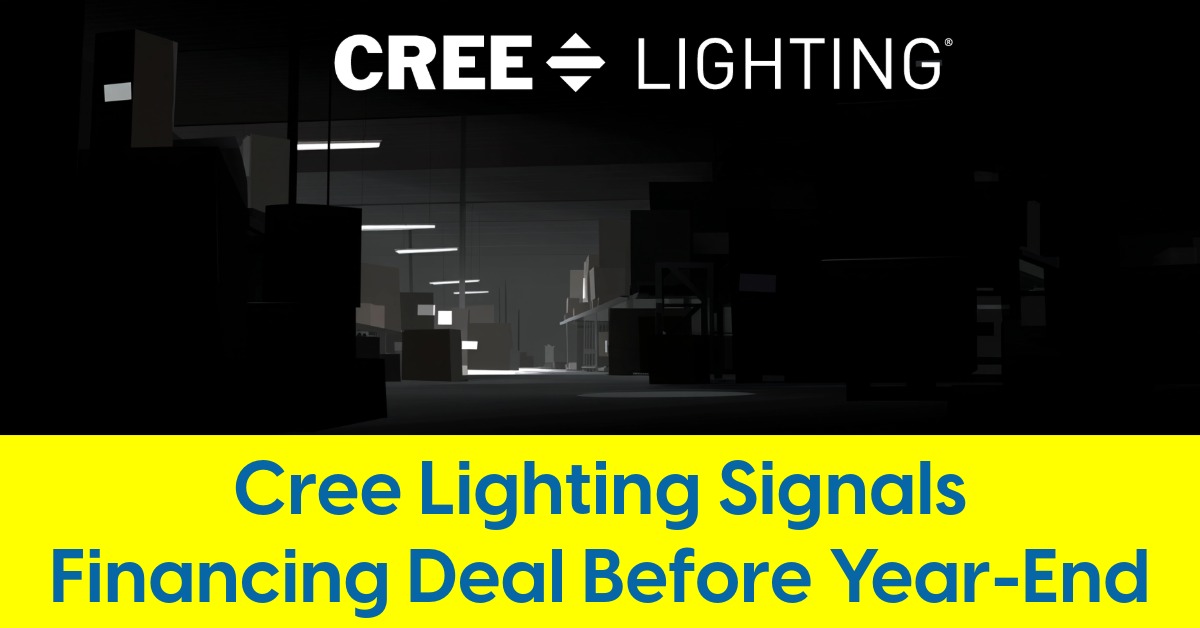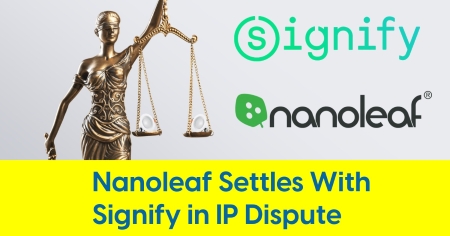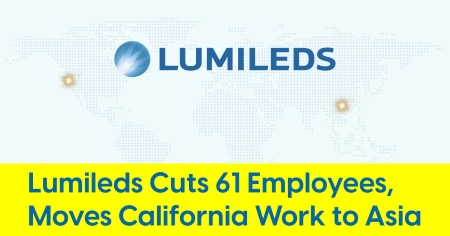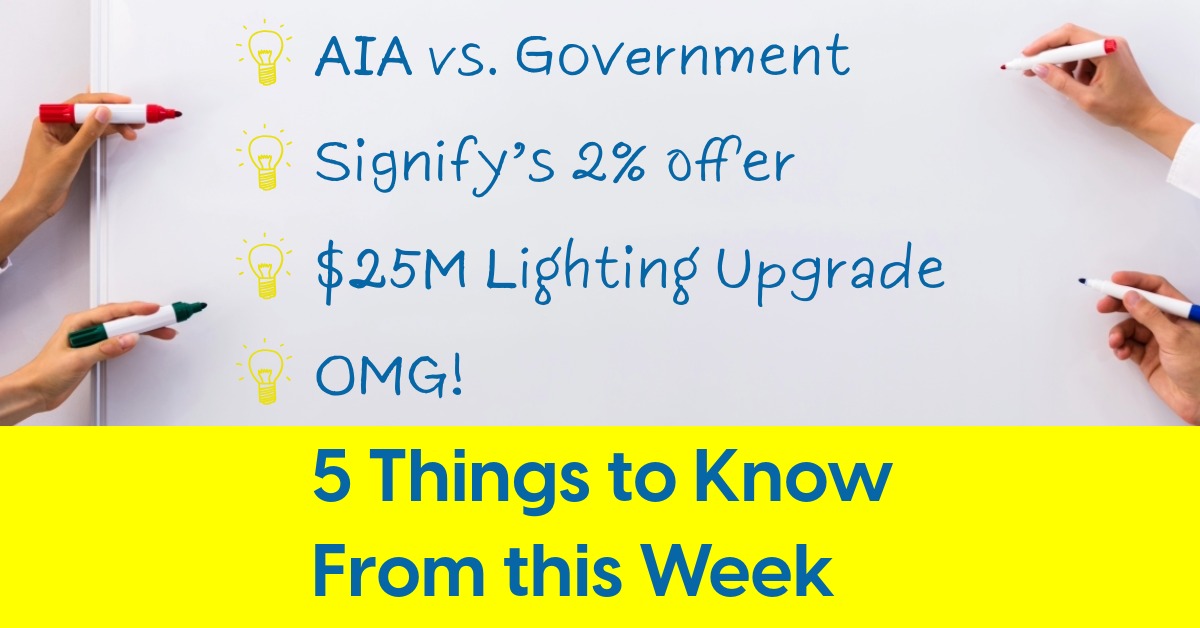March 5, 2025
7 Key Insights from Signify’s Annual Report

At $2.2 billion in revenue, the U.S. remains the company’s strongest market
Signify’s 245-page annual report is a dense read — packed with figures, corporate strategy, and the usual statements about a sustainable future. But as always, the most interesting insights aren’t the ones that make the headlines or quarterly earnings calls.
Inside Lighting combs through the fine print each year, looking for the details and nuances that matter most to North America’s lighting people. This time, we summarize hard-to-find U.S. performance data, signs of tension at the board level, and insights into the looming leadership transition as CEO Eric Rondolat prepares to step down in April. We also highlight a major wildcard for the company: tariffs. With global trade shifting, Signify’s ability to adapt could have lasting consequences for its U.S. operations.
Here are the seven nuanced takeaways from this year’s report.
1. Signify’s U.S. Market Outperforms Rest of World
Signify reported €6.143 billion ($6.45 billion) in total revenue for 2024, an 8.4% decline from the previous year. However, the company’s U.S. market demonstrated greater resilience, with sales falling 5.3% year-over-year to €2.095 billion ($2.20 billion).
This marks an improvement from 2023, when U.S. sales declined by 12.3%. The comparatively smaller drop in 2024 allowed the U.S. to increase its share of Signify’s total revenue, accounting for 34.1% of global sales, up from approximately 33% in 2023.

While overall revenues declined, the U.S. market outperformed other regions, which experienced a steeper downturn of nearly 10%.
2. USA is Signify’s Largest Market
Signify’s numbers tell a story of consolidation — and a paradox.
When the company spun off from Philips Lighting in 2016, it retained a deep roster of legacy brands, including Philips lamps, Advance ballasts and drivers, Lightolier, and Color Kinetics. That foundation was later expanded through acquisitions like Cooper Lighting ($1.7 billion in revenue at the time of its 2020 acquisition), and Fluence ($141 million in 2022).
Yet, despite assembling a formidable lineup in professional lighting, today’s total U.S. revenue of the equivalent of $2.2 billion suggests that the whole is smaller than the sum of its parts. For all the deals and restructuring, the U.S. remains the company’s financial backbone — but its footprint has arguably shrunk rather than expanded.
And then there’s the Netherlands, an outlier in the numbers. Despite its modest population — smaller than New York State — Signify’s headquarters market is its second-largest, generating €510 million, or 8.3% of total sales. That’s a level of market penetration that far exceeds the country’s size, a testament to the brand’s deep roots and home-field advantage. In a global lighting industry where scale usually dictates success, tiny Netherlands punches well above its weight.
| Country | Revenue (2024) € (M) |
% of Total |
|---|---|---|
| United States | 2,095 | 34.1 |
| Netherlands | 510 | 8.3 |
| China | 381 | 6.2 |
| Germany | 347 | 5.6 |
| Rest of world | 2,810 | 45.7 |
Yet the broader picture suggests a company whose future remains tied to its past. The brands that once defined professional lighting in North America are still driving revenue, but their aggregate size suggests that growth has been elusive. Signify has managed to hold onto its position, but with new technologies and competitors reshaping the industry, the question is whether it can build on what it has — or whether it’s managing the long tail of legacy businesses.
3. Losses in 2023 Lead to Low U.S. Tax Bill
Signify’s corporate tax payments highlight the global distribution of its business, with the Netherlands, India, and China accounting for the largest contributions. The United States, despite representing just over one-third of the company’s sales, saw just €1 million in corporate income tax paid — far less than other key markets. Signify stated that the low U.S. tax bill is largely due to the use of prior-year losses, which reduced taxable income.
2024 Tax spend by Country
| Countries | € million |
|---|---|
| The Netherlands | 19 |
| India | 11 |
| China | 11 |
| Mexico | 5 |
| Australia | 2 |
| Saudi Arabia | 2 |
| Germany | 2 |
| Canada | 2 |
| United States of America | 1 |
| Other | 11 |
| Total | 66 |
Remember, taxes are typically assessed on profits, not revenue. Signify's net income for 2024 was €334 million.
4. Tariffs and other Risks
Signify is bracing for potential tariff increases on imports into the U.S. from China, Canada, and Mexico, warning that trade protectionism could impact the general lighting market. The company acknowledges that “geopolitical tensions and rising protectionism are leading to higher import duties, trade restrictions, and local manufacturing requirements,” which could add pressure to its cost structure. With North America already its largest revenue region, any shift in trade policy could tighten margins and force adjustments across its supply chain.
To counter these risks, Signify is leaning on its global supply chain. The company “leverages its global (manufacturing) footprint and adjusts its sourcing base when needed” to minimize tariff-related disruptions. Nearshoring and supplier diversification are part of the strategy, along with long-term contracts designed to lock in competitive shipping and logistics costs.
Inflation in commodity and energy prices is another factor, and Signify aims to offset those pressures through a mix of cost savings and market-driven price adjustments. The message is clear: if tariffs rise, some of that impact will likely be passed down the line.
5. Benchmarking Against other Global Companies
Signify benchmarks its performance against a defined peer group of 15 global companies in the electrical and lighting industries. This peer group serves as a performance yardstick, particularly for Total Shareholder Return, a key metric that factors in share price appreciation and dividends over a three-year period.
The latest rankings, covering January 2022 through December 2024, highlight the challenges Signify faced, as the company posted a total shareholder return of -38.9%, placing it near the bottom of the group. With companies like Eaton Corporation and Hubbell achieving returns above 100%, Signify’s underperformance had negative implications for its long-term incentive payouts to executives.

Above: Excerpt from Signify 2024 Annual Report
While Acuity Brands showed a strong 52% return, companies like Zumtobel and ams OSRAM joined Signify on the negative side of the chart.
6. Leadership Changes with a Splash of Dissent
The departure of longtime CEO Eric Rondolat has been known since January, but the annual report revealed that during Signify’s 2024 Annual General Meeting (AGM) there was the unexpected resistance to board appointments. The normally predictable governance process encountered opposition from a major shareholder over supervisory board reappointments, with a “relatively high against-vote” recorded on multiple items.
The dissent was largely driven by a shareholder applying stricter limits on board commitments than Dutch corporate governance norms. Signify acknowledged the pushback, stating, “We engaged with the shareholder to hear their views. We will take these into consideration in our future discussions and decisions”.
This shift in tone coincides with a broader leadership transition. Longtime Supervisory Board Chair Arthur van der Poel stepped down, replaced by Gerard van de Aast, while Bram Schot assumed the role of Vice Chair. New appointments include Jeroen Drost, who joined the board in May 2024.
7. Last CEO Standing
Eric Rondolat isn’t making his exit about himself. In Signify’s annual report, the longtime CEO kept the focus on the company’s future rather than his own 13-year tenure — one defined by resilience, strategic vision, challenges and also by far outlasting every chief executive from last decade’s “Big 3” lamp companies.
Rondolat took over Philips Lighting in 2012, just as LEDs were upending the market. He called it early: by 2015, LEDs made up half the industry, exactly as he predicted. He led the spin-off of Philips Lighting into Signify in 2016, turning it into the world’s largest pure-play lighting company. While competitors faltered — OSRAM and GE Lighting were broken up and sold off — Rondolat kept Signify on course, navigating a pandemic, major acquisitions like Cooper Lighting in 2020, and shifting market conditions.
The past few years haven’t been without challenges. Demand fluctuations and economic headwinds tested the company, and Signify hasn’t been immune to the pressures facing the industry. But through it all, Rondolat’s steady hand kept the company stable, adaptable, and consistently focused on the long game.
Now, he’s walking away. His final word? Still about the company, not himself:
"As I close my chapter at Signify, I am deeply grateful for the efforts of our employees over the years, as well as the trust of our customers and shareholders, who enable us to keep moving forward. I am confident that with the right structure, strategy, and team, Signify will continue to deliver on its promises in 2025, with innovations that drive progress toward a brighter future for people and the planet."
— Eric Rondolat, CEO, Signify
A Company in Transition, an Industry in Flux
Signify’s latest report tells the story of a company in transition — one still dominant in professional lighting but facing new challenges. The U.S. market remains its financial backbone, yet recent figures suggest growth has been elusive. Tariff risks, shifting leadership, and intensifying competition all loom over its next chapter.
Eric Rondolat’s departure marks the end of an era, but the bigger question is what comes next. Can Signify reinvent itself for the next wave of the lighting industry, or is it managing the slow decline of a legacy empire? The numbers don’t give a definitive answer — but they do make one thing clear: the company’s next moves will be critical.










